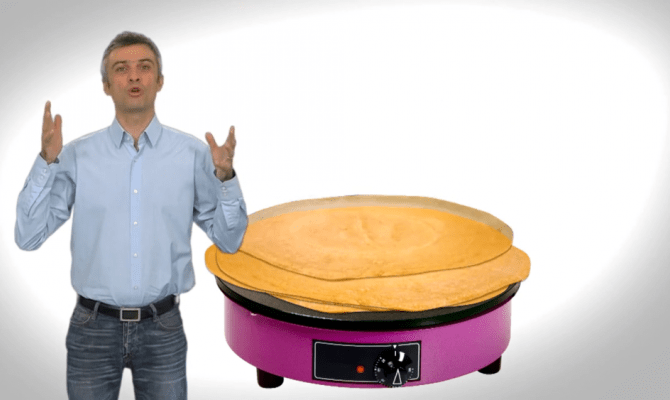In Brittany, eating crêpes is almost second nature. And the passionate war that rages between those who prefer the term crêpe and those who prefer the term galette reflects their love for this simple foodstuff, versatile enough to suit all tastes. And what unites all these lovers? The fact that their crêpes and galettes are made with a very specific type of flour: buckwheat, known as sarrasin or blé noir in France. Unlike wheat, it is not a cereal; it is part of the Polygonaceae family, which also includes the likes of rhubarb and sorrel. Some believe buckwheat was brought back to Brittany during the Crusades, but actually it was introduced to the Armorican peninsula as a food crop during the 15th century. And buckwheat doesn’t just grow in Brittany; it’s farmed and eaten in several other regions of France, particularly Normandy. Its greatest advantages are that it grows easily in poor soil and gives a high yield. Until the 19th century, buckwheat flour was a staple of the Breton diet. But because it does not contain gluten, it cannot be used to make bread. Buckwheat was therefore eaten as a sort of porridge, in crêpes or galettes and in a traditional flan-type desert called far.
‘Billigs’ Going Back to the Middle Ages
Crêpes have therefore been on the menu in Brittany an extremely long time. Jehan Lagadeuc’s Catholicon, the first Breton-Latin-French dictionary compiled in 1499, contains an entry for the word crampoezenn, translated as crêpe and it also mentions the existence of a spanell or vire-galette (wooden spatula for turning over crêpes) . In the place where the medieval Landévennec Abbey used to stand, archaeologists have even found several recipients resembling a billig (a Breton term for crêpe makers originally made of cast-iron), or crêpe pans, dating back to the Middle Ages. Scientists believe they were used to bake a sort of far, something thicker than the modern crêpe, but using the same ingredients. At the time, of course, there was no question of feasting on a galette complète (crêpe filled with ham, an egg and cheese)! Instead people would dip their crêpe or galette in a bowl of soup or stew. Gradually, new practices started to develop. At the end of the 19th century, folklorist Paul Sébillot discovered a curious recipe in the north west of the Ile-et-Vilaine region: le pain de Becherel: an egg rolled up in a hot galette. Perhaps the forerunner of the galette-saucisse (traditional hot snack in Brittany - a large, peppery sausage wrapped in a galette), so adored today by those living in the region?
Crêperies: A Recent Invention
But where can one eat these celebrated crêpes? At home, yes, but also in the streets. In towns, professional crêpières (it was mainly a female profession) made and sold crêpes and galettes for people to take with them to eat in music halls. The first crêperie, as we would recognise it today, was probably established in Rennes in the 19th century. Situated on rue Beaurepaire, the restaurant touted a menu that was accessible to everyone: ‘A sou’s worth of galette, a sou’s worth of egg and, for that little bit of luxury, a sou’s worth of extra butter’ (a ‘sou’ being the historical equivalent of 5 centimes). Outside of Brittany, crêperies also began to flourish throughout the 20th century: poverty and a desire to see other places led many Bretons to emigrate to the US, Le Havre or Paris. In these big cities, emigrants would meet up together regularly to enjoy a meal from their home region. In the 1950s, crêperies began to open in Paris, where crêpes were served on plates. Like pizza, the simple and straightforward dish from Italy which was supplemented with extra toppings once it reached the United States, the Breton crêpe also began to attract extra and more diverse ingredients. The result is a local and international success story which remains a great family favourite to this day.
Translated by: Tilly O’Neill






